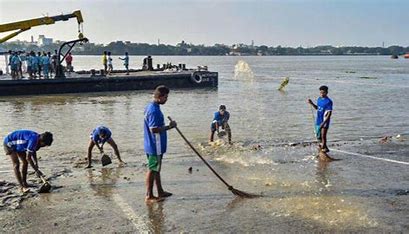Ministry of Jal Shakti Holds 248 Cleanliness Drives Under Special Swachhata Campaign
The Swachhata Campaign of the Indian government has been implemented in government buildings from November 2022 to August 2023, with a major emphasis on a campaign for cleanliness. To improve the working environment, a number of actions have been carried out as part of the Special Campaign, including cleaning, reviewing and simplifying regulations and procedures, reviewing the record management system, making productive use of space, and disposing of waste. The Department of Water Resources, River Development and Ganga Rejuvenation, Ministry of Jal Shakti, has adopted the Special Campaign in its whole and has carried out several activities in numerous cities. Review meetings on the status of the campaign-related operations were held at the Secretary level with Senior Officers, and nodal officers were named to streamline the procedure and guarantee the campaign's success.
Social media platforms are receiving data, including images and videos, showcasing the work done by the Departments and its Organisations in numerous cities. On social media channels, the campaign's best practises are posted. The Department-affiliated CPSE WAPCOS Ltd. has jumped into the campaign with gusto and holiday zeal. It has taken extraordinary measures to sift out undesirable files and identify, eliminate, and auction rubbish.
Drives prior to and following cleaning were photographed. A large, unproductive, and overgrown plot of land close to the Department's administrative building was transformed into a lovely recreation area by the Farakka Barrage Project (FBP), a subordinate organisation of the Department. By creating lovely gardens and clearing the land of weeds, it also transformed both banks of the Feeder Canal at its emerging point (Head Regulator) close to the Farakka Barrage into a popular tourist destination. Additionally, in addition to evaluating and purging outdated files, it discovered and eliminated scrap, condemned vehicles, outmoded machinery, etc., saving a significant amount of space. One of the strongest strategies to increase awareness was their pre- and post-cleanliness efforts.
The status of progress of the matters disposed, files reviewed, weeding out of files, revenue generated and spaces freed is as follows-
Sl. No. | Parameters | Achievements |
1 | VIP References (Received/Disposed) | 254/224 |
2 | Inter-Ministerial References (Received/Disposed) | 15/15 |
3 | Public Grievance Appeals (Received/Disposed) | 431/345 |
4 | Public Grievances (Received/Disposed) | 3974/3224 |
5 | PMO References (Received/Disposed) | 48/39 |
6 | Physical files Reviewed | 32399 |
7 | Physical files Weeded out | 13872 |
8 | E-Files Reviewed | 11111 |
9 | E-Files Closed | 36 |
10 | Cleanliness Campaigns | 248 |
11 | Space freed (Sq ft) | 5900 |
12 | Revenue Generated | 1757014/- |
Various departments took up a holistic and integrated approach to clean the surrounding areas, river, lakes and ponds. This kind of effort ensured cleanliness around water bodies, thus giving boost to the larger objective of the Swachhta Campaign.


